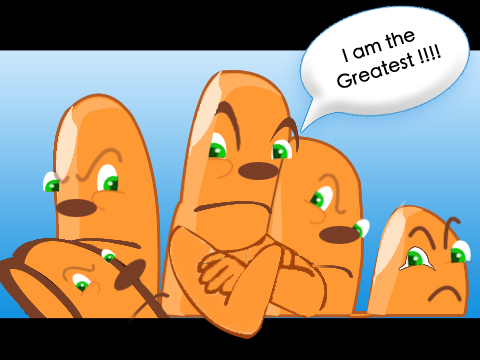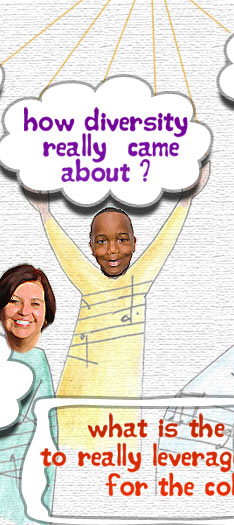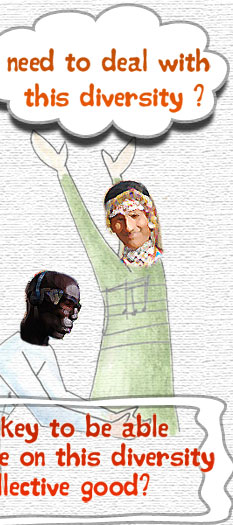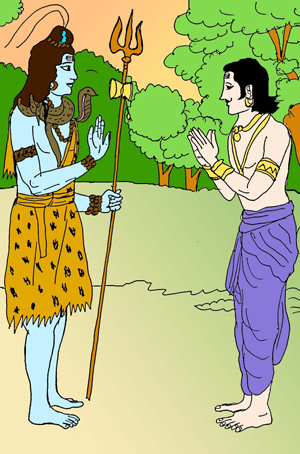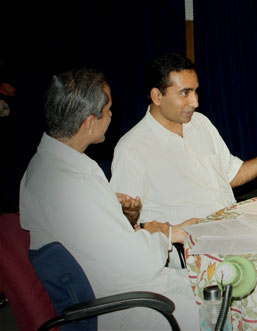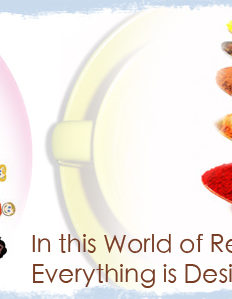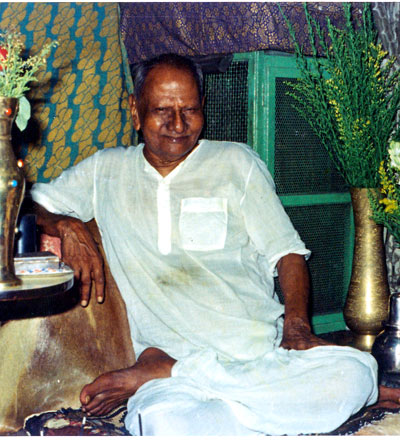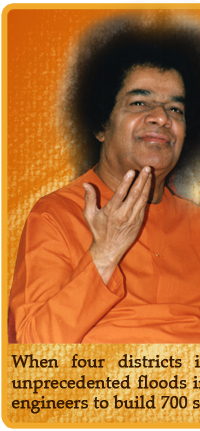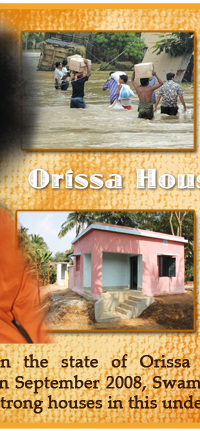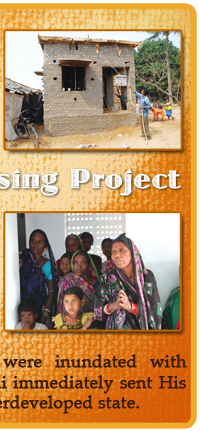|
|
|
|
RADIO SAI STUDY CIRCLE – PART 04
- Read Other Episodes of Study Circle -
Om Sayeeshwaraya Vidhmahe
Sathya Devaya Deemahi
Tannah Sarva Prachodayath
Om Shanthi Shanthi Shanthihi
The Radio Sai Study Circle thought-series is increasingly drawing the interest of readers from around the world. H2H has been receiving a steady stream of responses, such as the one from US-based Phil Hamilton. He writes, “This series is just wonderful. I feel as though I am with devotees unpeeling some aspect of Swami’s teaching. It is instructional, memorable and humorous.”
K. Mohan Rao, who is part of a Sai Study Circle group in Abu Dhabi wrote, “We are really impressed how beautifully the classes are structured and how each participant makes us understand the core points that are discussed.” He added that the series has inspired many more to join the Abu Dhabi Study Circle Group as they felt the need to delve deeper into Swami’s teachings and gain an in-depth understanding of His messages. Similarly, there are many others (like Ms. Aarthi Krishnan from Chennai who requested for these programs to be of longer duration, Ms M. Arpita, Ms. Anjali from Australia, Mr. Subramanya Sastry, who is an alumnus of Sai University, Ms. Marlini, etc.) who have sent encouraging feedback about this series.
As in the previous episodes, this fourth edition too draws the participation of four alumni from Swami’s University out of which Amey Deshpande (AD), Sai Giridhar (SG) and KM Ganesh (KMG) are research scholars at the college while Bishu Prusty (BP) serves at Radio Sai. Mr. G. S. Srirangarajan (GSS), Controller of Examinations in Bhagawan’s University is the moderator of this panel discussion; he too is an alumnus of Swami’s University.GSS: Sairam everyone. Let us start with a story narrated by Bhagawan. As all of you would know, He often narrates anecdotes that are very humorous and at the same time practical. Here, He talks of the five fingers of the hand. All of us are aware that the fingers work in unison and harmony. But Swami says one day they started fighting with each other, so much so that it resulted in a big argument. The thumb first claimed, ‘It is not possible to undertake any work without me; hence I am great’. Then the index finger smiled and said to the thumb, “Look here, oh thumb! How can you perform any task without my support? Moreover, I am used as a pointer to identify individuals. Hence, I am greater than you.” Next, the middle finger intervened and said, “There is no point in what you all say! I am the tallest among all the fingers; two of you on one side and two of you on the other are serving me as ADCs (aide-de-camp). Hence I am the greatest!”
Then Swami moves on and narrates how the ring finger said, “I feel like laughing at your ignorance. Don’t you know that people adorn me with gold rings studded with precious stones such as diamonds, emeralds, and topaz? Hence, I am your king.” Finally, as is always the case, the little finger came up and said, “I lead from the front when it comes to teaching a lesson to someone and punishing the guilty. Hence I am your leader and you have to follow me.”
This is how the argument goes on according to Bhagawan until the heart intervenes and says, “Oh ignorant ones! Each one of you is as important as the other. One cannot perform any task if there is no unity and harmony among you. In fact, you represent the five human values, the five life breaths, the five Divine principles of a human being.” The five fingers then learn the lesson and start to work again in harmony.
So, in this session, let us discuss about diversity and the unity that permeates it.
When we look around, we see diversity in every aspect of creation. Let us begin by enquiring into the fundamental necessity of diversity. When Bhagawan says there is only one God, why then did He create this diversity?
Subsequently, we will try and understand how this diversity came about, what is its genesis, its source? Further, we will discuss how we can see unity in diversity and then go on to how to deal with it. We will also try and examine the unifying underlying principle in diversity about which Swami constantly talks about in His discourses. After this, we will come back to the point about why we are not able to see unity in diversity, especially since most of the problems we face today stem from our inability to do so. Finally, we will conclude with the key to how exactly we can do this.
And now, why don’t we begin with the first part as to why diversity is necessary? Let me share a short story; a Chinna Katha narrated by Bhagawan that struck me as very relevant to our discussion. It gives a clear message of why we need this differentiation, not only from the spiritual point of view but also for the functioning of society at the secular level.
There once was a king ruling his kingdom peacefully and happily. But he was extremely sensitive to the troubles and difficulties of people. So he said, “I want to pray to God to make everybody like me. Why should all of them not be like kings?” So, he goes to the forest and meditates for a long time. Finally God appears and asks him what he wants. The king says, “God, why are there so many troubles and difficulties? Why are some rich and the rest poor? Some do mean kind of tasks and the others do more important jobs. Why can’t all be the same?” God asked, “Are you sure you want this?” The king says, “Yes, God. This is the type of kingdom I want.” God says, “Ok, if this is really what you want I grant you your wish.” The king is really happy and as he moves back to his city after crossing the forest, he suddenly finds that the whole picture has changed.
The roads are dirty; all clothes are lying on the roadsides, unwashed; the drains are overflowing; and the king wonders what had happened in the few days that he was away. He enters the palace and there too, he notices that everything is shabby. Then it dawns on him that all the people in his kingdom had become wealthy and had risen up the ladder like him. All his subjects were now potential kings. So, nobody wanted to wash clothes or clean the roads.It then struck him about the mistake he had made by asking for a wrong wish because this sort of equality does not allow the society to function in a balanced manner. Of course, Swami then says that the king goes back to the forest and apologises to God much like how most of us do something and repent for it later! God appears again in all His mercy and says, “Ok, now that you have understood the truth, things will come back to their normal shape.”
The lesson that Swami drives home from this Chinna Katha is about how diversity is absolutely necessary. What do you say, Amey?
AD: Absolutely! In fact, diversity is such an important and integral part of each one of our lives. Even when we glance around, we find bewildering diversity. Just the other day, I read that science has been able to categorise only 1.5 million species to date and there could be as many as 10 million species, some of which we don’t even know after these many years of existence. I also read that there are about 400,000 different species of plants!
BP: I guess there will be still more in the Amazon forests–totally unexplored territory with millions of species!
AD: Absolutely! Can you believe there are 6,500 languages spoken across the world?
BP: Are these inclusive of dialects as well or just languages alone?
AD: This excludes dialects. There are 195 countries–although most people are not too sure about this figure as well. That is the kind of diversity we are talking about! Similarly, there are 13 major religions and 75 sub-castes if we pool in all the religions.
GSS: Even at the micro-level, take a tree for example! Look at two leaves of the same tree. As we know, even the veins of the leaves are different. Take identical twins! There is a difference even in them! So, are there any two things alike? I think God did not want clones and that is why He created diversity.
SG: In fact, talking about why we need this kind of diversity, let me ask you a question Amey. Which sweet do you like?
AD: I like Gulab jamun.
SG: How about you, Sir?
GSS: I love jalebis.
SG: How about you, Bishu?
BP: I like a special Oriya dish; I am not sure what it is exactly called.
SG: Ganesh?
KMG: I like moti choor ka laddu.
SG: It is very interesting to note that each one of us likes a different kind of sweet. And Swami says essentially the role that a sweet dish plays is to impart sweetness to us, isn’t it? But one likes pastries, another likes cakes, a third wants ice creams, and so on; there are so many varieties of sweets that are available. But the purpose of the sweet is to impart sweetness. In the same way, there are so many religions in the world. Swami however constantly reminds us that there is only one religion, the religion of love. What it essentially means is that even if the paths that people follow are different, with each religion essentially catering to the choices of different people being born out of different needs and unique circumstances, in essence they all impart the sweetness of love only. Swami gives a beautiful anecdote. He says hundreds of people come to Prashanthi Nilayam. Each one of them takes a different route but finally their destination is the Supreme Abode of Peace and Love, ‘Prashanthi Nilayam’.
GSS: It is similar to the concept of ‘mass customisation’ in business jargon because every individual wants a customised product. Truly speaking, God has done that. He has given a unique path to every devotee to reach Him and I think that is what diversity is all about.
KMG: I think it becomes very clear that diversity is the inherent nature of this creation because if it has to function, there has to be diversification. If you look at the game of life, all cannot stand in the goal post. Or else, who will shoot the ball? Similarly, all cannot choose to bat, as there needs to be someone to do the bowling. So, variety is the very spice of creation. Not only that, the same man can be a father, a husband, a son, a teacher, a Hindu or a Muslim, a citizen of a country and many more! In this world of relativity, everything is designed to diversify.
Just like each ingredient in a food has its own flavour to contribute to the taste of the completed dish, each one of us is designed to come together for the manifestation of a higher and subtler beauty and truth. If you take the example of mud, it is inert in itself. Similarly water too is inert. The seed—although it has the potential of life—is also inert for all practical purposes unless and until it has germinated. Air likewise is inert. But when they all come together, what emerges is a plant with a beautiful flower. To sum up, diversity is actually a systematic plan of a higher order.
AD: That is very nicely put.
SG: In the Quran, Chapter 30, Verse 20-22, it is said that these diversities are considered very natural. They are even called God’s signs.
GSS: As I understand, each one is cut out for something. Even the Study Circle is possible because we are five of us; we have our viewpoints and perceptions. Everywhere you need different components coming together to give a collective whole, which is more than the sum of its parts. Bishu, let us go back to the source of this; why are you different from me? Why is Ganesh different from you? Why is a businessman different from a farmer? How did this basic difference in people’s temperaments, competencies, thinking, viewpoints, etc. come about? What is the source of all this?
BP: Basically, what you are asking is, “How did this diversity happen”? Well, the simple answer to this is God willed it so. We all know creation is a manifestation of the Divine Will and if you look at it in practical terms, the Purusha or the Cosmic Consciousness who is latent in the Supreme One influenced Prakruthi which is the Cosmic Energy. That is how creation happened. The act of influencing included a disturbance to the equilibrium of the three gunas. These three gunas are inherent in Prakruthi or Nature.
GSS: Gunas are three attributes?
BP: I am coming to that. What are these three gunas? What are gunas to start with? Guna, simply, is a characteristic. For example, every entity or being has a typical trait. A tiger for instance is fierce, a deer is gentle, a stone is inert and so on.
There are basically three gunas—Sathwa guna, Rajo guna and Thamo guna. Sathwa guna relates to characteristics such as harmony, order, equipoise, etc. Another way of understanding Sathwa guna is it refers to all those qualities that help us remain in peace or in perfect balance like practising selfless service, adhering to right conduct, loving unconditionally, etc.Next comes Rajo guna. This relates to traits such as action, movement, dynamism and so on, and includes all those qualities which propel us to be active. For instance, passion, a sense of achievement, aggression, possessiveness—these are all Rajo gunas. Finally, the third is Thamo guna. This relates to all the characteristics that lead to entropy or inertness like sloth, absolute laziness, inactivity, slumbering and so on.
All these three qualities—order, action and entropy—are an intrinsic part of creation and every entity in creation has all these three gunas.
GSS: Every creation needs to have all the three gunas?
BP: Yes, indeed. In fact, the Lord declares in the Bhagavad Gita, “There is no being, neither among men here on earth or among the Gods in heaven who is free from the three gunas”.
So, what we see in Nature is basically innumerable combinations of the three gunas.A good analogy would be the three basic colours RGB—Red, Green and Blue. From the combination of just these three, we have millions of hues and colours, and that is what we see on a TV screen. So that is how we perceive diversity.
Similarly, we have people with different temperaments, attitudes, inclinations, etc. only because of the play of these three gunas.
GSS: You are echoing what Swami has said that all this diversity is because of the permutation and combination of the three gunas.
BP: Let me give you another example. A person who is a saint will have a larger proportion of Sathwa guna; an artist on the other hand will have more of Rajo guna; the more egotistic he is, the more Rajo guna he has. Interestingly, I don’t think this rationale is limited to human beings alone.
GSS: Swami says a rock has more of the Thamo guna; the reason why it remains still in one place. But then, He says diversity is a permutation and combination of the three gunas and the five elements. Am I right, Giridhar?
SG: Very true, Sir! Adi Shankara gives a beautiful description, a very systematic process of how the entire creation has emerged because of the play of the three gunas and the five elements. I will focus more on the five elements, they being earth, fire, wind, water and space or ether and the description goes thus. He says what we have as the creation is a mix of the five gross elements. But they were not the first things that came into being. From the creator actually were born subtle elements with the same names—earth, fire, wind, water and ether.
Each of these subtle elements—the thamas aspect of them—divided into two halves; each half further divided itself into four small pieces or parts, and each gross element, like say earth is made up of one half quality of earth and one eighth of every other element. Basically, earth is not earth, it really has fifty percent the quality of earth and some qualities of fire, wind, water and ether. Each gross element by itself is a combination of all these five different elements. It is a wonderful theory. If you go ahead and read this theory on Panchikaranam (This is a treatise by Adi Shankaracharya on the five basic elements that make our gross body), it will really appeal to the intellectual mind.
GSS: It is amazing, the mysterious way in which God has created this. Let’s now look into something that we literally witness when every child is born. As science says, when the zygote is formed in the mother’s womb, do we know that all the cells are perfectly alike initially? In fact, in the first few days, the mitotic cell divisions begin converting the zygote to a multi-cellular organism and after going through the blastula stage—somewhere between seven and ten days—the gastrulation takes place. This is when although all the cells have the same DNA, different cells now begin to become different organs. This is what is referred in biology as the cellular differentiation. It is amazing how all the cells that are exactly identical, for no reason or for some unknown reason, start grouping themselves to form tissues and organs. Can you imagine? But for this process, the embryo would have been a mass of flesh with no purpose at all. Instead, do you see what diversity has done? You come up with a human being!
AD: So, in the beginning there is just a mass of cells and then suddenly a certain group of cells decide to become the brain, while other groups become the various sense organs and so on and so forth!
GSS: Some intelligence in them prompts them to become the brain or the stomach!
SG: Again, diversity seems to be natural. Actually, it is the bedrock of creation.
KMG: I believe that it is all but a play of the gunas, the guna dynamics so to speak. One thing we need to be clear is that we cannot label these gunas as good or bad. We cannot say, for instance, that the Sathwa guna is good or the Thamo guna is bad. That is not the right approach.
GSS: It is good to be aware that each guna has its own part to play. We sleep because of our Thamasic nature; otherwise, we would have suffered from insomnia throughout our lives! The key is to maintain a right balance of the three gunas in us.
KMG: Exactly! If you take the fan, for example, all the three blades are equally important for the fan to function. Swami gives the example of three big bricks that we have to put to set up the fire. All three of them are equally important.
Sri Nisargadatta Maharaj, a great Indian spiritual teacher and philosopher of Non-dualism. The world came to know about him in 1973 after the publication of his most famous and widely translated book, "I Am That".
GSS: Yes, but an element of doubt could arise here. One could argue that it is the gunas which is responsible for different people having different degrees of compassion, love or even violent tendencies. An individual turns out to be a thief or terrorist, for example, because of the permutation-combination of the guna elements. Why do we then say that all the gunas are not to be classified as good or bad? The reason why people have negative tendencies is because the Thamo quality is predominant.
The response to this argument would be in Bhagawan’s explanation. He says we need to evolve and climb up the ladder of these gunas. And although all are equally important, you kill the Thamas because that is the lowest rung in the ladder. You kill the Thamas using the Rajas. Swami says, “Use your ambition and passion to kill inaction. Then use Sathwa, which is more at the level of order, to kill Rajas. Eventually, one needs to transcend all these gunas.”So, the expectation is that we move upwards on the ladder of gunas and eventually reach a point wherein there is a perfect balance, or in other words, you transcend everything. Would it be appropriate to use this as a benchmark to understand diversity?
AD: I guess once you reach that level, you will actually see unity because the person who is beyond the gunas—the Lord or our Masters—do not see any difference between one and the other. For example, Swami says Nisarga Datta Maharaj was always at the level of ‘I’.Once someone came and asked the Maharaj why he tends to keep talking about the ‘I’ when there are so many other problems in the world. The Maharaj replied, “Is it? But my world is very peaceful. Your world seems to be very different.”
Here, it did not mean there were no problems. But Maharaj was not only able to see the purpose of each and every activity that is happening but also understand the cause and accept that as the Lord’s will.
GSS: I think that is why Swami says, “Don’t hate the bad person, don’t hate the terrorist, but hate the terrorist tendencies in him.” Unfortunately, what we do is associate a bad trait with the person and start hating the being.
Well, I think we have deliberated in great depth about how the concept of diversity manifests itself. We also understand well that if we were to see only the diversity aspect of creation, we will be like the five fingers fighting with each other. So, now comes the next step—how to deal with diversity? We need to acknowledge that there is a difference, and leverage these differences to come up with a collective good. But at the same time, diversity can lead to fights and differences. For instance, the various types of troubles in the world today such as religious conflicts, fundamentalism and the like are because of diversity.
BP: How do we deal with it? I think it all comes from a misplaced understanding of diversity.
GSS: You are right. It is the wrong understanding and wrong perception of diversity.
SG: I think as Amey pointed out, there have been masters and great sages in the past who have been able to see the kind of unity in diversity. In fact, the Vedas are the outcome of their vision for that kind of unity. This is revealed in the Purusha Suktam. Swami often makes us chant Purusha Suktam and even chants along with us. Basically, in the verse:
Brahmano sya mukhamasit
Bahu rajanya krutah.
Uru tadasya yadvaisyah.
Padbhyagm sudro ajayata.
What the great sage of realisation conveys to us is though we see four different categories of people in society, each class is but a part of the whole. For example, the Brahmin class or the intellectual class actually formed the head of Brahman (God). Then, they say Bahurah Janya Krutah, that is, the warrior class (which includes the military, police, etc.) who actually protect the society, form the shoulders of the Supreme Lord.
The third kind of profession—the administrative or the business class—forms the thighs. They are the basic support system of the Supreme Cosmic God.And, the Shudras—the people who work in the fields, the farmers, the entire service sector for that matter—form the most important part of the Supreme Being which is His Feet. Through this explanation, what the sages have done is to point out that all these various aspects are but aspects of God Himself.
GSS: Giridhar, the Vedic verses basically say that these four different types of categories or Varnas as they are called is actually not to be understood the way it has wrongly been interpreted as casteism. It is not at all that. The classification was made for administrative convenience. Today, which nation or society does not have these four categories of people—the intelligentsia, the academicia, the defence sector, traders, businessmen and the service sector? So it is all for the functioning of society. That is what diversity is all about; each serves a Divine purpose.
AD: This is precisely what even the verse is trying to tell us. In fact, in our own body we can see the various functions happening. So we are actually able to see the unity in diversity in our body itself. We have the intelligentsia (head); we have administration (heart), we have the service sector (hands) in our own body. And that is why at this point I would like to mention a statement of Bhagawan wherein He says, “The proper study of mankind is man.” The way I understand this is if you want to study what is mankind, just study what a man is. The entire body is so inter-connected and inter-dependent.
To know more about project read the article THE OCEAN OF COMPASSION from H2H Archives Bhagawan gives a very interesting example here. He says, suppose you are walking along the road and you get pricked by a thorn. The first thing that happens is your mouth expresses the pain and then your hand goes to pick it out. And had the same happened to a child, it would in no time start crying out of pain! Now did the leg at any point of time say or the hand mention that it is not my business?
The thorn has pricked the leg and it is the business of the leg to handle it. Or did the eyes ask why it was supposed to cry? Every part of the body feels that they are part of the whole. Imagine, if this is the same sentiment that prevails amongst each one of us as we live out our roles in the society, how harmoniously we would be living! Can we then tolerate pain in any part of the society? I don’t think so. Even though diversity is absolutely necessary, each one has its own place; but we must understand that together we are part of that Cosmic whole.
GSS: I recall what happened when the earthquake struck Gujarat a decade ago and the way Swami rushed out to serve those people. And the same thing happened during the recent Orissa floods. Swami’s heart opened up and He actually reprimanded us for sitting silently in the face of such a catastrophe! He asked the authorities if there were no rich people doing something there. None could answer. He then said He would build houses for the affected people. This is what Swami expects us to do—to reach out spontaneously to any pain, any suffering happening in any part of the globe because we all are One Supreme Being.
AD: That is how the concept of Grama Seva started. We will not go into the story now. But, what is important to know is that there are any number of such stories and examples if we take Swami’s life. I remember how one of the victims from Orissa asked, “Ye Kaun Hai?” (Who is this Bhagawan Baba?) It is because they were all wondering about who this person was, who stays in Andhra Pradesh but had heard their pain. When they came here to thank Him last year during Ugadi festival, I still remember Bhagawan showering them with several utensils and things that would be necessary for their new homes. In the background, the bhajan was going on –
“Deena Dukhiyon se Prem Karo Mera Sai Prasanna Hoga
Sai Mera, Mei Tera, Yeh Prem ki Behathi Dhara”It was such a beautiful sight.
Mention of this bhajan and I am reminded of an incident. It so happened that in Brindavan just at the moment when Bhagawan was getting onto the stage, I happened to be singing this bhajan. Swami stood on the stage and looked at me. When I sang the lines “Sai Mera Mei Tera…”, Bhagawan was enacting the whole meaning “I am yours and you are Mine and we both are together—same.” When the Avatar comes down to teach, diversity will be there, but we need to perceive our unity which is inherent.
... The Abounding Grace of Sai to Orissa from H2H archives
During the Gujarat earthquake incident, one of the elders told Swami that it was a great service He was doing. Swami said, “See, if your child falls down and is in pain and cries out to you, what would you do?” The elderly person said, “I would rush and pick up my child, Swami.” Bhagawan said, “Would you say you did a great service in doing that?” Then Swami said a beautiful sentence in Telugu, “Idi naa pani ra (This is My duty)”.
GSS: That is what He expects us to discharge—the obligation of Love and the duty of Love.
BP: Whenever Swami does anything for us, we tell Him— “Swami, You have taken so much shrama (trouble) for us, but He says, “Idi shrama kadu bangaru, idi prema (It is not labour or strain; it is Love).”
Dear readers, this is an edited transcript of the third episode of our radio series Radio Sai Study Circle. While we definitely enjoyed offering this to you, we would like to know what you feel about this programme. So please do send in your feedback generously to h2h@radiosai.org mentioning your name and country. Every line you write will help us to know what you would like and give us clues to come up with more such ideas and offerings. We hope and pray to Swami that we can serve you better.- Read Other Episodes of Study Circle -



